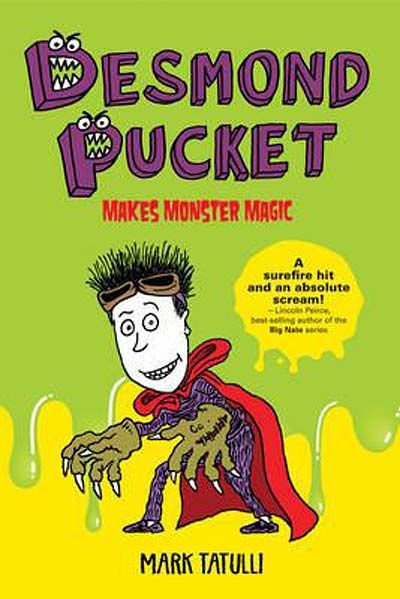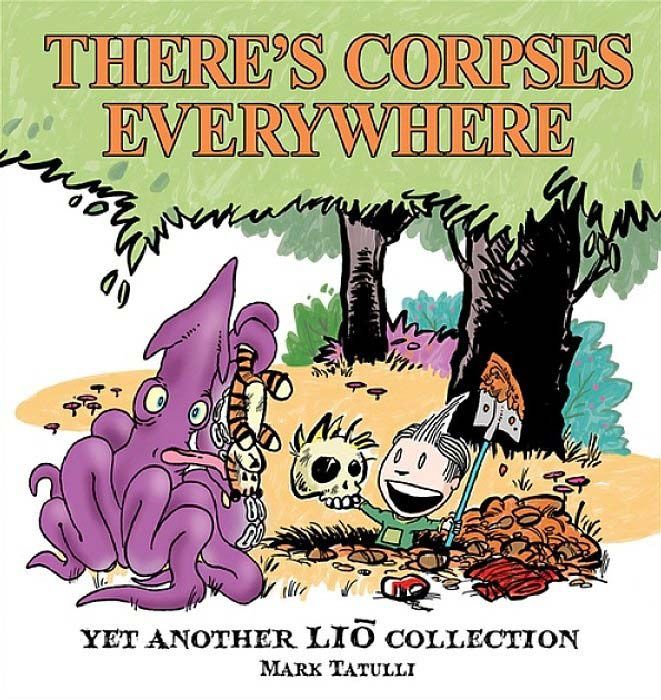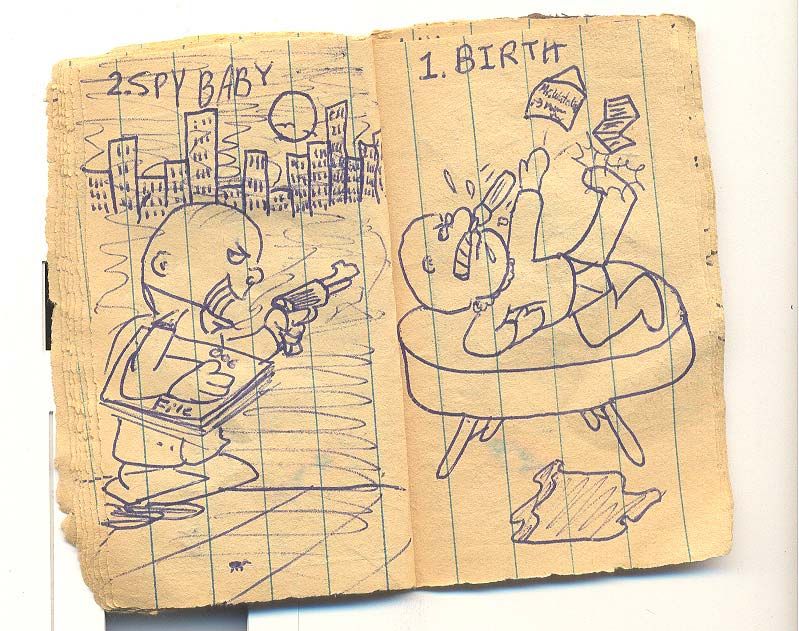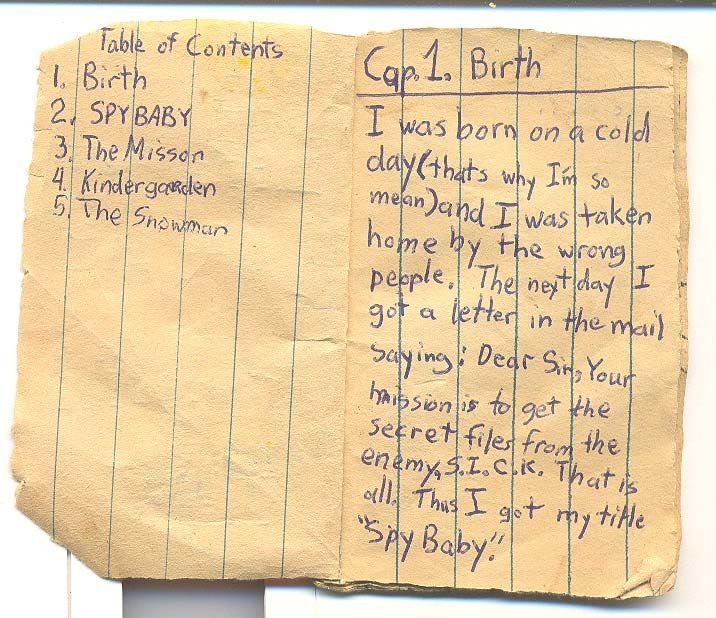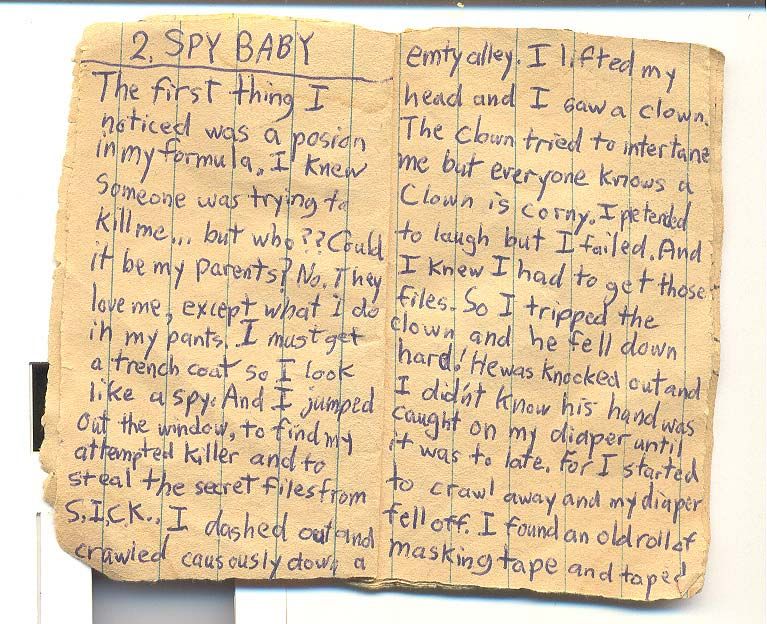With two daily comic strips for on his plate, "Heart of the City" and "Lio," Mark Tatulli is a busy cartoonist. The latter, a pantomime strip that owes a debt to Gahan Wilson and Charles Addams, won the Newspaper Comic division award from the National Cartoonist Society and has been collected in books with titles like "Happiness is a Squishy Cephalopod," "There's Corpses Everywhere" and "Zombies Need Love Too." Beyond the world of comics, Tatulli is also a filmmaker and animator, earning three Emmy Awards for his work over the years.
Tatulli's latest project is the illustrated book series "Desmond Puckett." In the first volume of the series, which is out now with a glow in the dark cover, the titular character and aspiring creature maker and effects artist has to stifle the urge to pull pranks so he doesn't get kicked out of middle school. It's a fun read and comes complete with a how-to section in the back illustrating the best way to pull off some of Desmond's pranks. CBR News spoke with the cartoonist about his book, the perfect guide for monster-lovers and aspiring monster-makers, and his love of creating horrible creatures.
CBR News: Where did the idea for Desmond Puckett come from?
Mark Tatulli: Gosh, so many places! But the main character Desmond is based primarily on me and my own recollections of the weirdness that was Junior High school and that kooky 11 to 14 age.
I'm curious -- when you were a kid, were you more Desmond or his friend Ricky, who is a cartoonist?
Desmond is a lot like I was, but so is Ricky. Ricky is also loosely based on a good friend I had in Junior High, someone I used to exchange cartoons with.We used to toss crumpled up comics to each other as soon as the teacher's back was turned. The idea was to get the other person to laugh and get in trouble with the teacher. It was sort of our own strange little game. We also wrote/drew our own cartoon magazine, written only for our own entertainment.
Did you have a Mr. Needles in your school days?
No, not as disciplinarian. My Junior High disciplinarian was a very fair and thoughtful woman -- yes, I did sit before her, in trouble. Mr. Needles is primarily based on a composite of some of my long-term substitute teachers. You know, those D-listers who were called in to replace a teacher that was pregnant or needed a leave of absence? The long-term subs usually had no control of the class and ended up spending a lot of time singling out certain button-pushing students for punishment. You never learned much from these sub-teachers, but they were usually oddball characters.
This approach, a "Wimpy Kid" approach, for lack of a better term, was that always your thought about how to tell the story?
"The Wimpy Kid approach" is more than an approach -- it is a genre, now. Some book stores are actually considering giving these diary books their own section.
Oddly enough, I wrote a diary-style fake autobiography when I was in the 5th grade and also kept a journal that was heavily illustrated, so this style of writing was something I had done in the past, and I was the age that I am trying to reach now. My comic strip writing and drawing is perfect training for the format. It's all very logical, in an odd sort of way.
In what sense is making a comic strip perfect training for this format?
Comic stripping is excellent training for this sort of novel writing because each chapter tracks like a single strip.There's a set up, some advancing of the story and then a payoff.There is also usually a tease to the next chapter, to make you want to keep reading.And, of course, the artwork drives the action.Brevity and simplicity are key.All of these are the same traits of comic strip writing.Writing illustrated novels is a very logical next step after comic stripping. And the great thing is, the novel is an expanded world.More detail, drama, and humor can be added in the writing, and the canvas for artwork is larger.
I did love how you have a section at the end, explaining how Desmond pulls off his stunts -- in a way that readers can easily replicate.
I will continue to add to that as the series progresses.I always loved the how-to sections of books when I was a kid.How to build something or perform a simple scientific experiment that related to the story I had just read.I would have loved something like this, that shows how to make scary stuff or effects. I have a million ideas, I could make a whole separate book of just that!
Was it your idea to have a glow in the dark cover?
No, that was my publisher's idea, but I love it and it flows perfectly with Desmond Pucket's world.
What do you have next planned for Desmond?
The next "Desmond Pucket" comes out in early May of 2014, and I promise more high-jinx and monster mayhem!
"Desmond Pucket" is similar in some sense to your comic "Lio," which is probably how most people know you. I love the strip, but I'm curious where it came from, because it's very different from what we tend to see in the newspaper.
Desmond and Lio are similar in that they both love monsters. Lio's reality is populated by real monsters and squids everywhere he looks, and he is content to be with them. Desmond's world is rooted firmly in the real world, but the monsters and scares are his own creation -- his "art," if you will. You can imagine that someday Desmond might make a good living in movie special effects or as a Disney Imagineer, but as a Junior High student, his strange tastes would raise some eyebrows.
"Lio" is just that: Something different for the comics page.I really wanted it to be completely different from everything else in the paper, almost like it's out of place or foreign or from another planet, even. I loved that kind of stuff when I was a kid; the strange cartoons that looked normal but were anything but. I remember sneaking off with my dad's copies of "National Lampoon" when I was about 10 or 11 and just studying all the weird comics, especially anything Gahan Wilson did. I remember thinking, "WTF am I looking at?!" I aspire to affect readers in the same way with "Lio."
One of the things I love about "Lio" is that the strip doesn't have any dialogue and there are no captions. It has the feel of an oddball silent movie and I was just wondering why you decided to do it that way. Was that a hard sell, because it's so different?
There were a number of reasons I decided to do a pantomime strip.First off, I loved those strips when I was a kid. At the time, the comics were filled with wordy adventure and soap opera strips and, so a strip like "Ferd'nand" or "Henry" was a nice fun break. Secondly, I love the idea of telling a story with just pictures. So much of comic stripping now is just filling the space with words, because the space is so limited.I don't have to save any space for dialogue and it's a real joy to fill that space with art, anyway I want.I also wanted to release my dark side, and I knew with a wordless strip I could really use the space for monsters and weirdness.
Finally, and this is the practical reason, there would be no translation of screwy American dialect for foreign newspapers, and broad physical humor transcends language borders. With more and more newspapers winding down space for comics domestically, I was also interested in attracting as many foreign markets as possible.And the strip has done very well overseas!
"Lio" does feel like something of a reaction to "Heart of the City," in the sense that it's completely different in every possible way. Was that part of what you were going for?
Yes, it's the only way I can write for two strips in one week.It also keeps me interested because both strips are challenging, each in its own way.
I was going to ask if you were a big Gahan Wilson fan, which I can definitely see in "Lio," but you already said so. Were there other cartoonists who influenced you, especially as far as monsters and creatures and aliens?
Well, Gahan Wilson's monsters were always so amazing to me because they were always different and always were so gross! Always full of carefully rendered textures and scales and so forth.Even when he drew generic monsters, he put a spin on them that was uniquely his own. I also love Sergio Aragones artwork, really highly detailed; so much to look at.He's also great with fantasy stuff and monsters! I also loved so many of the "MAD" magazine cartoonists (Jack Davis, Mort Drucker, etc) and the really dark and disturbing "National Lampoon" cartoons, where I first discovered Gahan Wilson.
I have to ask because you've made a book about a young monster obsessed kid who wants to make creatures as an adult, with "Lio," to the extent that Desmond is you, are you living young Desmond's dream?
For the most part, Desmond's world is anchored in reality just like the rest of us.The Monster Magic he makes he has to do using practical elements that exist in the real world.Special effects are really special to him! The fun for him is taking rubber and plastic tubes and liquid latex and monster masks and fake blood and turning them all into one amazing thing that can scare all of his sisters friends with.I'm not so sure Desmond would be satisfied drawing and writing for a living.He draws comics to illustrate his inner thoughts and comment on his situations, but scaring and real-time monster effects are his passion.I think if he met me in real life, he'd think what I did was sort of cool -- but he would much rather pick the brain of Tom Savini or Rick Baker.


